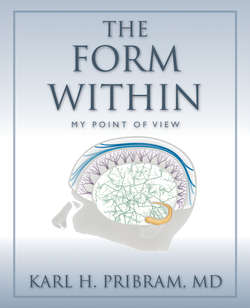Читать книгу The Form Within - Karl H Pribram - Страница 41
На сайте Литреса книга снята с продажи.
Encounter at MIT
ОглавлениеIn the early 1970s, I was invited to present the results of these experiments at the Massachusetts Institute of Technology. The ensuing discussion centered not on the results of my experiments but—ironically, it being MIT— on my use of computers. David Hubel stated that the use of computers would ruin visual science by taking the research too far from a hands-on, direct experience necessary to understanding the results of observation. I retorted that in every experiment, in the mapping of every cell, I had to use the direct hands-on mapping before I could engage the computer to quantify my observations. I stated that in order to obtain the results that I had shown, I needed stable baselines—baselines that could only be statistically verified by the use of a computer. Only by using these baselines, could I show that the changes produced by the electrical stimulation were reliable.
Then my host, Hans-Lukas Teuber, professor and chair of the Department of Psychology at MIT, rose to support Hubel by saying that the use of computers would also ruin behavioral psychology. He was an old friend of mine (our families celebrated each Thanksgiving together), so I reminded him that my laboratory had been completely computerized since 1959, when I’d first moved to Stanford. That alone had made it possible to test 100 monkeys a day on a variety of cognitive (rather than conditioning) tasks. I pointed out that he should be pleased, since he was a severe critic of operant conditioning as a model for understanding psychological processing.
I came away from the MIT lecture disappointed by the indifference to the remarkable and important experimental results obtained both at Cambridge and in my laboratory, a disappointment that persisted as the feature approach to visual processing became overwhelmingly dominant during the 1990s.
